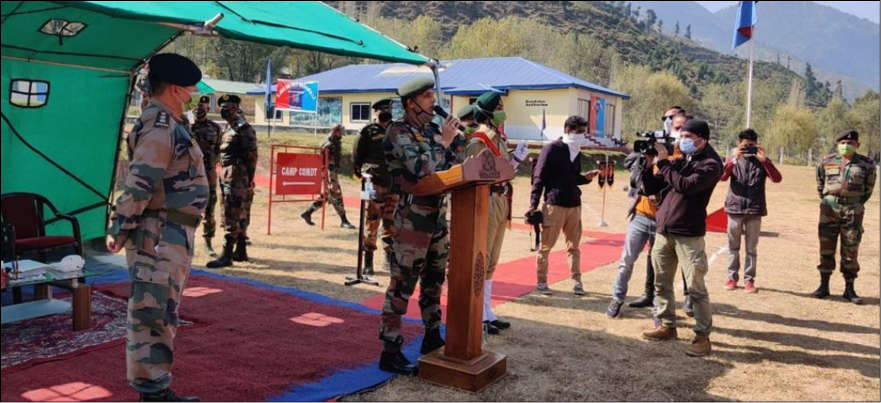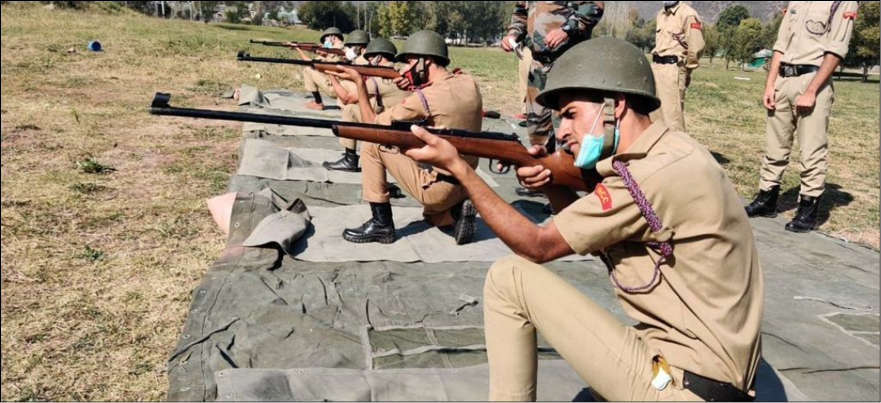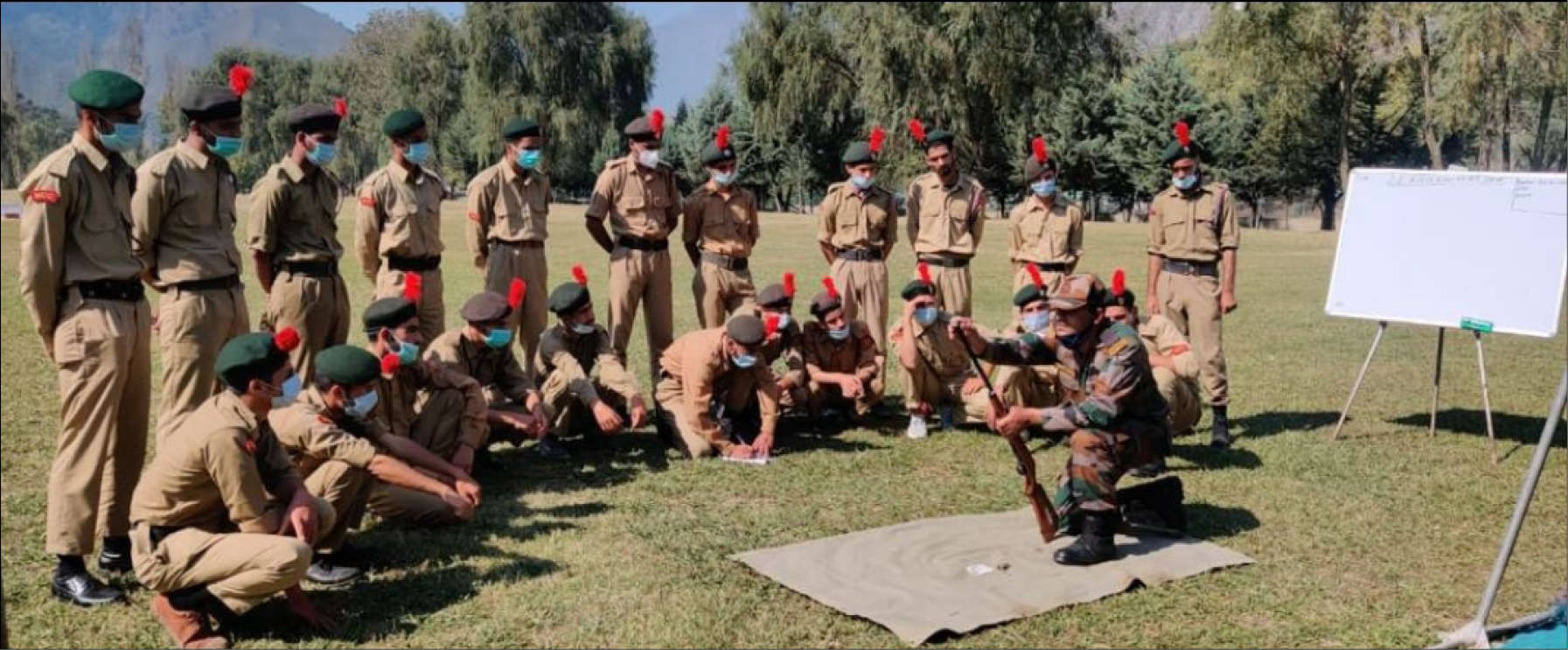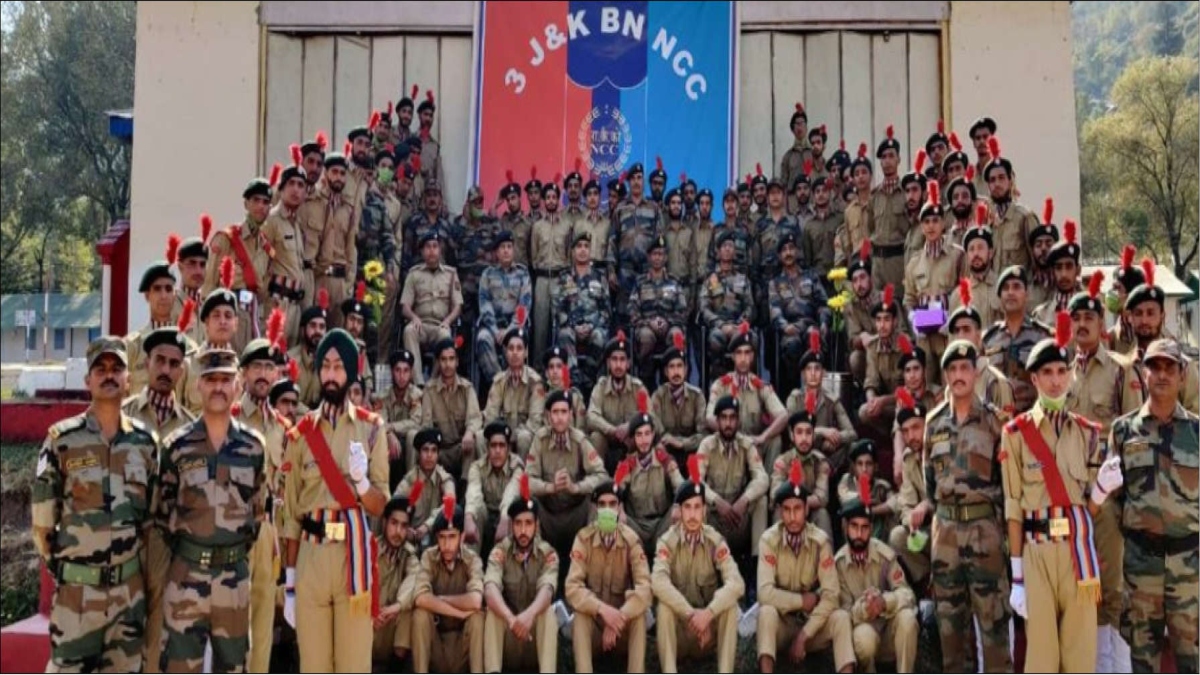NEW DELHI: Last few weeks have been witnessing the otherwise inactive grounds of the Army Goodwill School at Uri reverberate with the loud and enthusiastic shouts of ‘ek-do-teen-ek’, these strange sounds emanating from the Uri Garrison had disturbed the usual hum-drum of the adjacent Uri market, drawing curious onlookers eager for a inquisitive peek over the Garrison boundary wall. To their surprise, they were 120 or so bright, young, energetic NCC cadets of the 3 J&K NCC Battalion rehearsing drill on the School Grounds, something which they had not seen happening for over a decade. 3 J&K NCC Battalion, the Headquarters of which is located at Baramulla, with assistance from the Army’s Dagger Division had taken the bold decision to go ahead with their Annual Training Camp at Uri, despite the pandemic, albeit with all the necessary precautions. The camp started in October despite fervent appeals from participating cadets for an extension, alas, budgetary constraints played spoilt sport!


Though the immediate purpose of the camp was to train and select suitable cadets who would subsequently go on to represent the UT at the NCC Republic Day Camp at New Delhi in January 2021, this pioneering endeavour went well beyond, to serve a much larger purpose of constructive engagement of the youth of Baramulla and Uri through a regimented, disciplined routine, as is familiar to the Army. The cadets were also imparted a lesson on their responsibility towards society through cleanliness drives in Uri Town as well as distribution of facemasks and other Covid protection measures amongst local civilians. On the face of it, over the nine days, the cadets probably learnt to establish camp, use modern firearms, parade with their fellow comrades, lead a healthy lifestyle, familiarise with avenues for joining the Indian Armed Forces but on a deeper plane they also realized the need to cahnnelise their vitality and energies for progressive and constructive pursuits, contributing to Nation building and eventually making a better life for themselves, all of which seems so relevant in recent times.

While initially, the camp was to cater to just 80 attendees on the first day, the enthusiasm and popularity was so contagious that another 40 soon joined in a couple of days as ‘Day Cadets”. They would attend all activities at the camp from early morning only to proceed home reluctantly in the evening. Naturally use of firearms would have been the most popular attraction for the young boys, day excursions to Kaman Post as well as the NHPC Hydro Power Project located near Uri were other popular highlights for the cadets. Notwithstanding the physical content of the routine at the camp, it is probably the close interaction the cadets had with the camp’s Army Staff, Army dignitaries as well as other eminent society members who visited the cadets at the camp, which will leave a lasting impression for times to come. The engaging interaction with GOC, Dagger Division as well as those with young local achievers, not very different from themselves, are bound to broaden horizons as raise curtains over the prospects of a better tomorrow.
Having made a beginning, it is only hoped that such collaborative endeavours of the Indian Army and J&K NCC sustain the new-found enthusiasm of the local Kashmiri youth by exploiting this benign platform to engage with them and guide them towards the possibility of a better future.

